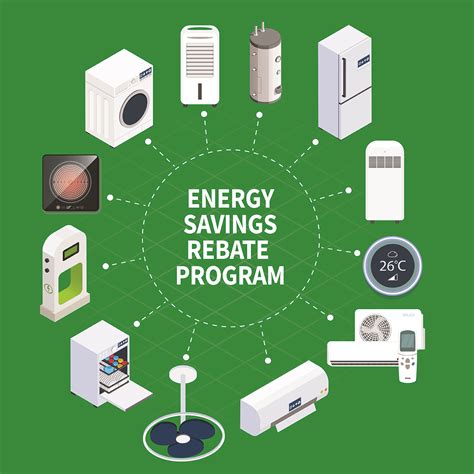In today’s world, energy efficiency is more crucial than ever. Not only does it help reduce your carbon footprint, but it can also save you a significant amount of money. One of the best ways to start making your home more energy-efficient is by taking advantage of the Home Energy Efficiency Rebate Program. This program rewards homeowners who make improvements to their home’s energy performance. In this article, we will guide you through everything you need to know about maximizing your savings through this rebate program.
What is the Home Energy Efficiency Rebate Program?
The Home Energy Efficiency Rebate Program is a government initiative aimed at promoting energy efficiency in residential houses. It provides financial incentives for homeowners who invest in energy-saving upgrades. Whether you’re installing energy-efficient windows, upgrading your heating system, or enhancing insulation, you may qualify for rebates that can significantly offset your expenses.
How Does the Program Work?
The program typically involves several steps:
- Eligibility Assessment: Before applying for rebates, determine if your home qualifies. Most programs require that your home be a primary residence and meet specific energy assessment criteria.
- Energy Audit: Many programs require an energy audit conducted by a certified professional. This audit identifies areas where energy efficiency can be improved, ensuring you make informed decisions.
- Home Improvements: Based on the audit, choose eligible improvements. Common upgrades include energy-efficient appliances, better insulation, upgraded heating/cooling systems, and renewable energy installations.
- Apply for Rebate: Once improvements are made, submit your receipts and any required documentation to the program for reimbursement.
Types of Improvements Eligible for Rebates
Various improvements may qualify for rebates under the program. Below are some common options:
- Heating and Cooling Systems: Upgrading to energy-efficient HVAC systems can reduce energy consumption significantly.
- Insulation: Improved insulation in walls, attics, and basements can help maintain indoor temperatures and reduce heating/cooling costs.
- Windows and Doors: Replacing older windows and doors with energy-efficient models minimizes heat loss.
- Appliances: Energy star-rated appliances generally consume less energy, providing savings over time.
- Renewable Energy Installations: Solar panels or wind turbines can also qualify for rebates, helping to offset installation costs.
Financial Incentives and How Much You Can Save
The financial incentives offered through the Home Energy Efficiency Rebate Program can vary widely based on the type of improvements you make, your location, and the specific program’s guidelines. Generally, rebates can range from a few hundred to several thousand dollars. Here are some factors to consider:
- Local vs. State Programs: Different states may have their individual programs with varying amounts and incentives.
- Deep Energy Retrofits: More extensive upgrades tend to yield higher rebates.
- Seasonal Promotions: Keep an eye out for seasonal promotions that may offer larger rebates for certain upgrades.
Tips to Maximize Your Savings
To ensure you get the most out of the Home Energy Efficiency Rebate Program, consider the following tips:
- Do Your Research: Look for all available programs and compare them. Some might offer more significant rebates than others.
- Combine Rebates: Explore combining federal and state incentives to maximize savings.
- Professional Help: Consider hiring energy auditors and contractors who are familiar with the rebate process.
- Stay Organized: Keep detailed records of all expenses, audits, and receipts to streamline the application process.
Challenges to Consider
While the program presents a fantastic opportunity for savings, you might encounter a few challenges:
- Eligibility: Not all homes qualify for every type of rebate. Be sure to check the specific requirements.
- Waiting Periods: Depending on your location, there may be delays in processing your rebate applications.
- Complex Requirements: Some programs may involve complicated paperwork and documentation, which could be frustrating.
Conclusion
The Home Energy Efficiency Rebate Program is a valuable resource for homeowners looking to enhance their energy efficiency while saving money. By understanding the eligibility criteria, types of improvements, and how to navigate the application process, you can take full advantage of the financial incentives available. Investing in energy-efficient upgrades not only lowers your utility bills but also contributes to a more sustainable future. Start your energy efficiency journey today!
FAQs
1. Who is eligible for the Home Energy Efficiency Rebate Program?
Typically, homeowners who live in their primary residence and have completed qualifying energy-saving upgrades can apply for the program. Always check specific eligibility criteria based on your location.
2. How do I apply for rebates?
You need to complete the required documentation showcasing the energy improvements made, include receipts, and submit everything through the program’s application portal.
3. How long does it take to receive my rebate?
The processing time for rebates can vary based on the program and local office workloads. Generally, it can take a few weeks to a few months.
4. Can I combine this program with other financial incentives?
Yes, many homeowners successfully combine rebates from federal, state, and local programs to maximize their overall savings.
5. Are these rebate programs available in all states?
While many states offer their version of the Home Energy Efficiency Rebate Program, the specific details and availability can differ. Check with local utilities or government agencies for precise information.
Download Home Energy Efficiency Rebate Program
